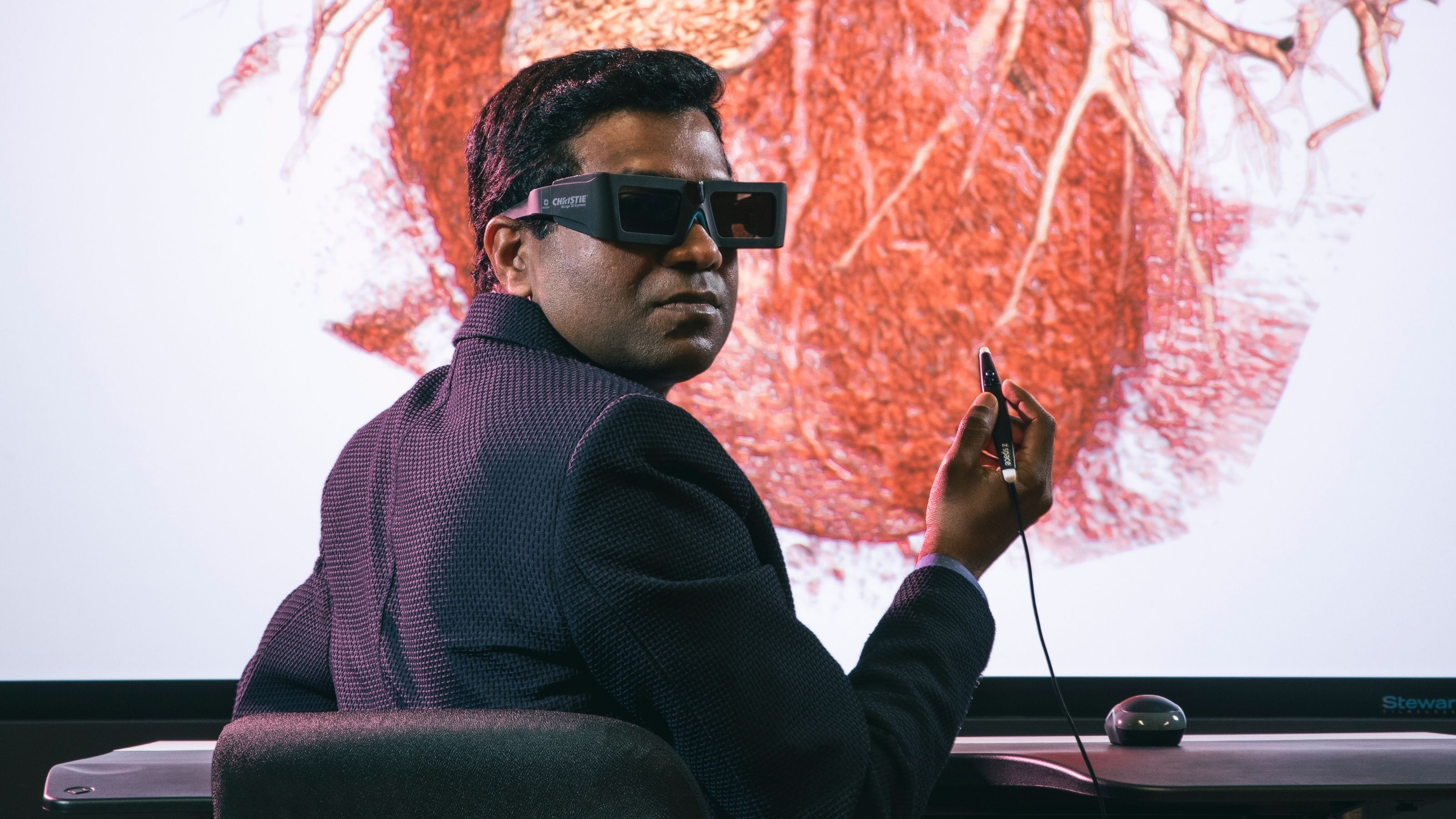Kumaradevan Punithakumar, an Associate Professor in the Radiology & Diagnostic Imaging Department in the Faculty of Medicine & Dentistry, shares how developing robotics and artificial intelligence to overcome limitations in echocardiography can help physicians and reduce wait times for patients requiring an ultrasound imaging.
In this week’s spotlight, Kumaradevan discusses how breaking away from traditional approaches can lead to novel solutions and why seeking out the expertise of others is key in interdisciplinary research.
How do you describe your work to people who don’t work in your field?
Echocardiography or ultrasound imaging of the heart is one of the most widely used imaging modalities to detect any heart problems. The echocardiography is used for the diagnosis in various clinics and hospitals virtually for all patients with heart disease symptoms. However, the modality suffers many limitations, including the inability to typically capture the entire heart in a single scan and requires a significant amount of time to complete the scan. Our team focuses on the developments of robotics and artificial intelligence to overcome these limitations.
What’s one big problem you want to solve through your work?
Our team’s research focus is to make ultrasound scanning and image analysis autonomous in order to help physicians and reduce patient wait times. In current settings, this process is quite inefficient due to the inadequate quality of scanned images and the requirement for intense manual post-processing of the images to produce quantitative clinical measurements.
What does the word “innovation” mean to you?
Breaking away from the traditional approaches and coming up with novel solutions that are practical, reliable, and efficient to tackle existing or even new problems. In my field of interdisciplinary research, technological developments play an important role in bringing innovative solutions to the problems related to medicine and medical imaging.
What’s been your biggest a-ha moment — in life or work — so far?
I had been studying concepts in mathematics and physics for a long time. I was fascinated in finding out that many of these concepts are relevant to medical image analysis when I was introduced to the field. In many instances, properties could be artificially constructed to resemble the physical world to help solve complex problems in medical imaging.
How do you or your team come up with your best ideas? (Do you have any rituals or habits that trigger your creative spark, for example? What do you do to create space for innovation?)
Our team often meets in person or online to chat and brainstorm new ideas. Fortunately, our team consists of researchers, scientists, and clinicians with expertise in various fields who are aware of the state-of-the-art developments in their fields and always bring novel ideas to the table.
What’s your favourite thing about working at the U of A?
I found the University of Alberta to be a friendly, supportive, and welcoming place consisting of world-class experts in various fields. I collaborate with many talented researchers and clinicians affiliated with the U of A with backgrounds in medicine, computing science, engineering, and the arts to establish solid synergistic relationships.
Do you have a role model at the U of A? How have they influenced you?
My role model at the U of A is Dr. Michelle Noga, who is a pediatric cardiac radiologist and a professor of radiology and diagnostic imaging. She was instrumental in recruiting me to the university almost a decade ago. I have received excellent support for my research work and career development from Dr. Noga since I started working at the U of A.
What’s next for you? Do you have any new projects on the horizon?
Telemedicine has always been an interesting research area to me. I am interested in developing a robotic ultrasound system for telemedicine applications to help patients who live in remote areas with limited access to healthcare facilities.
This conversation has been edited for brevity and clarity.
Innovator Spotlight is a series that introduces you to a faculty or staff member whose big ideas are making a big difference.
Do you know someone who’s breaking boundaries at the U of A? (Maybe it’s you!) We’re interested in hearing from people who are creating new solutions to make our world better. We want to feature people working across all disciplines, whether they’re championing bold ways of thinking, driving discovery or translating insights from the lab into the market.
Get in touch at blog@ualberta.ca.

About Kumaradevan
Dr. Kumaradevan Punithakumar is an associate professor at the University of Alberta, Department of Radiology and Diagnostic Imaging, and an operational and computational director at the Servier Virtual Cardiac Centre, Mazankowski Alberta Heart Institute. Prior to joining the University of Alberta in 2012, he worked as an imaging research scientist at GE Healthcare, Canada. His areas of research interests include medical image analysis and visualization, machine learning, computer vision, information fusion, and object tracking.
